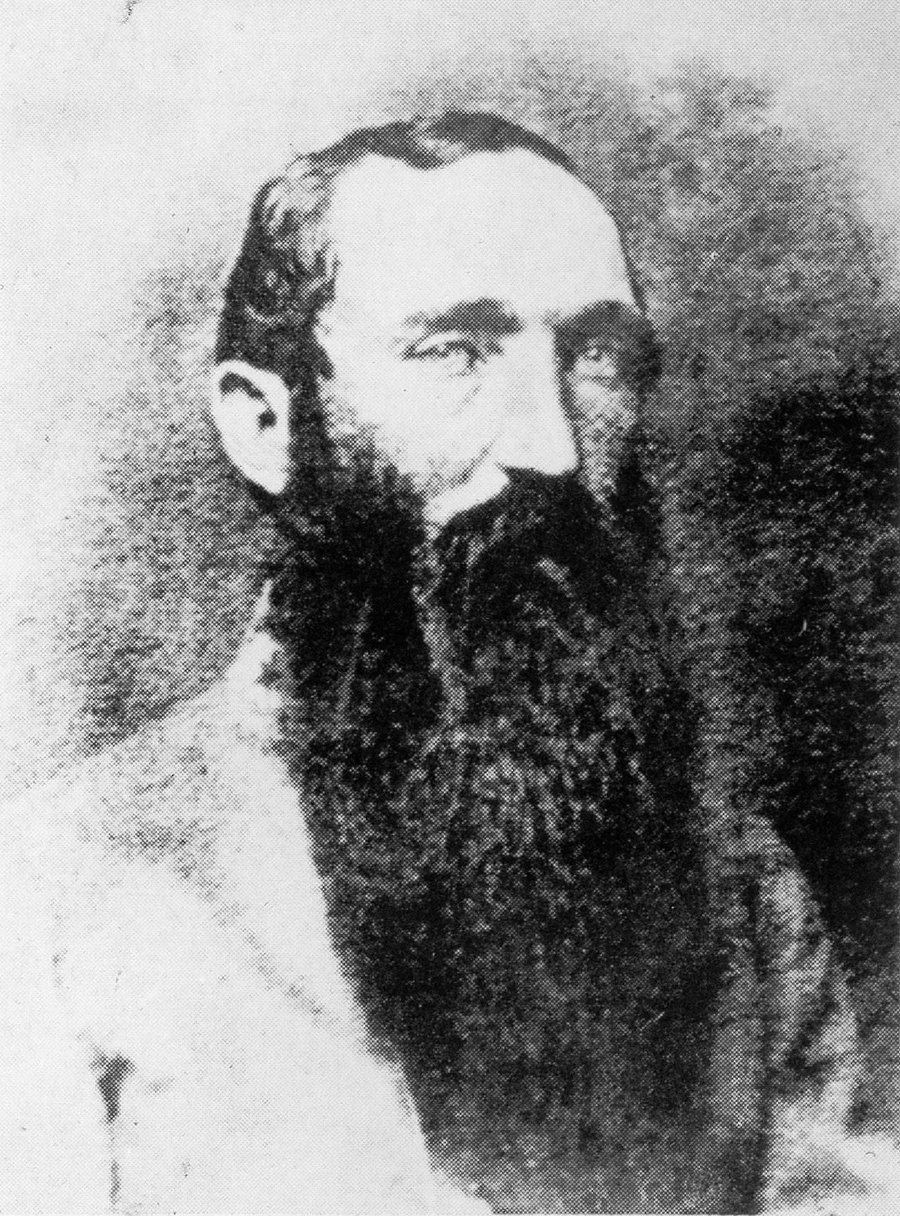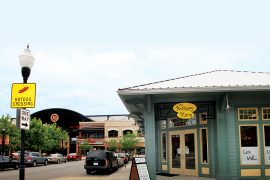By James E. Casto
HQ 59 | AUTUMN 2006
Albert Gallatin Jenkins was only 33 years old when he died, a victim of wounds he suffered in battle during the Civil War. But the young Jenkins managed to pack a great deal into his brief lifetime. He was a well-to-do planter, a Harvard-educated attorney, a member of first the U.S. Congress and then the Confederate Congress and, most notably, a daring Confederate cavalry commander. Today, his family home is a Cabell County landmark.
Jenkins was born Nov. 10, 1830, at Green Bottom, just a few miles up the Ohio River from Guyandotte. His father, William Jenkins, was the owner of a 4,400-acre plantation on a fertile stretch of lowland along the Ohio.
It was the elder Jenkins who built, in 1835, the two-story home that still stands on the former plantation.
Young Albert Jenkins prepared himself for college at Marshall Academy, then went to Jefferson College in Canonsburg, Pennsylvania, where he graduated in 1848. He went on to Harvard Law School, graduating in 1850.
Jenkins opened a law practice in Charleston but with his father’s death moved back to Green Bottom, establishing a law office there. He was named a delegate to the Democratic National Convention in 1856 and served two terms in the U.S. House of Representatives.
With the outbreak of the Civil War and Virginia’s secession from the Union, Jenkins resigned his congressional seat, left Washington and returned to his home at Green Bottom. In an area that included both Union and Confederate supporters, Jenkins made no secret of where his own sympathies lay — he immediately voiced his undying support for the Confederacy.
On April 20, 1861, Jenkins was elected captain of a volunteer company of 101 riflemen from Cabell and Mason counties. He converted the members of the company into cavalrymen, gave them the name “Border Rangers” and arranged for their enlistment in the Confederate Army.
On July 17, 1861, at the Battle of Scary Creek in Putnam County, Col. George S. Patton (the great grandfather of Gen. George S. Patton of World War II fame) was in command of the Confederate troops. When Patton was seriously wounded, it was Jenkins who rallied the disorganized Confederates to victory.
In August, Jenkins formed the 8th Virginia Cavalry, CSA, and became its colonel. In November, he joined with other cavalry units in staging a surprise raid on Guyandotte.
Early in 1862, Jenkins briefly left the field to serve in the First Confederate Congress but he was back on duty by August, when he was promoted to brigadier general.
Civil War expert Jack L. Dickinson of Huntington, author of Jenkins of Green Bottom (Pictorial Histories Publishing Co., 1988) describes Jenkins as “a fearless Cavalry raider.” Perhaps his most daring exploit came in August and September 1862, when he led his men on a 500-mile trek through what is now West Virginia, harassing federal troops and disrupting their supply lines. The Confederate raiders even crossed the Ohio River, becoming the first to raise the Confederate flag on Ohio soil.
Jenkins went on to command a battalion of cavalry at the Battle of Gettysburg, where on July 2 he was wounded. He was not able to rejoin his command until autumn. He then spent the early part of 1864 raising and organizing a large cavalry force for service in western Virginia.
Hearing that Union Brig. Gen. George Crook had left the Kanawha Valley with a large force, Jenkins took the field against him. On May 9, 1864, he was severely wounded and captured during the Battle of Cloyd’s Mountain.
In the Huntington Herald of June 22, 1900, E.F. Chapman, who served with Jenkins, offered this account of the general’s fate: “Jenkins’ brigade was broken and began a hasty retreat. The General … with drawn sword, was encouraging the men to stand and cover the retreat of the other regiments of the brigade. They too fled, leaving the General alone, when he was shot from his horse and picked up by the Federal troops.”
Jenkins was carried to a nearby house, where a Union surgeon amputated his arm. But Jenkins never recovered from the surgery and died 12 days later.
Writing in 1900, Chapman went on to voice a sentiment that echoed the comments of many who knew and served with Jenkins: “All in all, Cabell County never produced a more illustrious son and well may those of his comrades who still survive feel justly proud of their leader and military chieftain, who, had he lived, would have furnished material for some of the brightest pages of our state and national history.”
Jenkins initially was buried at the New Dublin Public Cemetery in Virginia. After the war, he was re-interred at his home in Green Bottom. Still later his remains were moved to the Confederate plot at Huntington’s Spring Hill Cemetery.
In 1988, much of what had been the Jenkins family’s land at Green Bottom was purchased by the U.S. Army Corps of Engineers to make up for the loss of wetlands taken for construction of the expansion of the Robert C. Byrd Locks and Dam.
The Corps leases 836 acres of the former plantation land to the state Division of Natural Resources, which operates it as the Green Bottom Wildlife Management Area.
The Jenkins house, located about 15 miles north of Huntington on West Virginia 2, is subleased to the state Division of Culture and History, which opens it to free public tours Tuesdays through Saturdays, from 10 a.m. to 4 p.m.
Partially refurbished, the house has been furnished with a few period pieces of furniture, while community groups and governmental agencies ponder how best to achieve its full restoration to its mid-19th Century appearance. Ultimately, an interpreted working plantation is envisioned.





